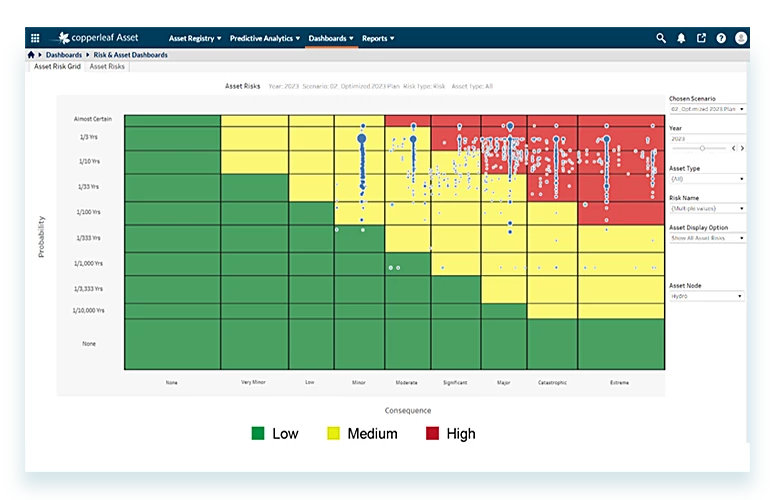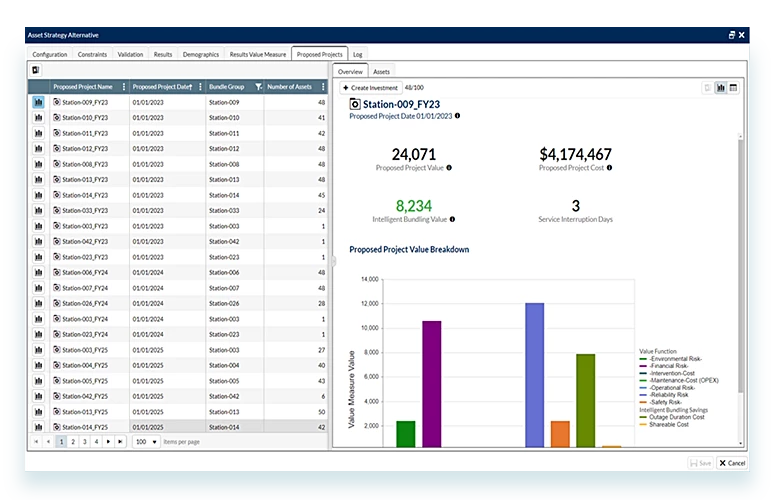The Copperleaf solution is a key element within Gasunie’s Risk Based Asset Management (RBAM).
Gasunie is committed to making transparent and well-founded decisions regarding the investments and maintenance of their energy infrastructure. Their goal is to minimise their overall future risk position and deliver maximum value to stakeholders.
Advanced Asset Investment Planning enables Gasunie to:
- Make data-driven decision making based on a single source of truth
- Understand our overall risk profile, and how this changes over time
- Establish a consistent and transparent risk assessment process
- Leverage ‘what-if’ scenarios to quantify and compare the risk and outcomes of different asset investment decisions or strategies
Gasunie team members can learn more about the project on via internal link.

Proactively manage risk exposure
Copperleaf Asset enables organizations to create, manage, and visualize asset strategies that maximize business value while proactively managing risk. It provides a quantitative, comprehensive assessment of all asset risks, so that you can confidently allocate resources across the entire asset base to mitigate the most risk. Copperleaf Asset makes it easy to understand the long-term risk exposure of your asset population and the impact of different strategies on risk over time

Balance cost, risk, and business outcomes
Copperleaf Asset considers funding, resource, and service level requirements, resulting in an actionable asset strategy that can be accomplished with available resources. What-if scenarios provide the ability to quantify and compare the risk and business outcomes associated with different asset investment strategies—to build consensus and agree on the best path forward. Make informed trade-offs between capital and maintenance costs to create a plan that balances total expenditure and minimizes overall cost.

Improve planning efficiency
Copperleaf Asset empowers you to create the right plan quickly and confidently. Data aggregation and automatic asset modeling result in improved planning efficiency with decreased cycle time and effort. This leads to greater organizational agility and resilience, enabling quicker response to questions, challenges, or changes.


